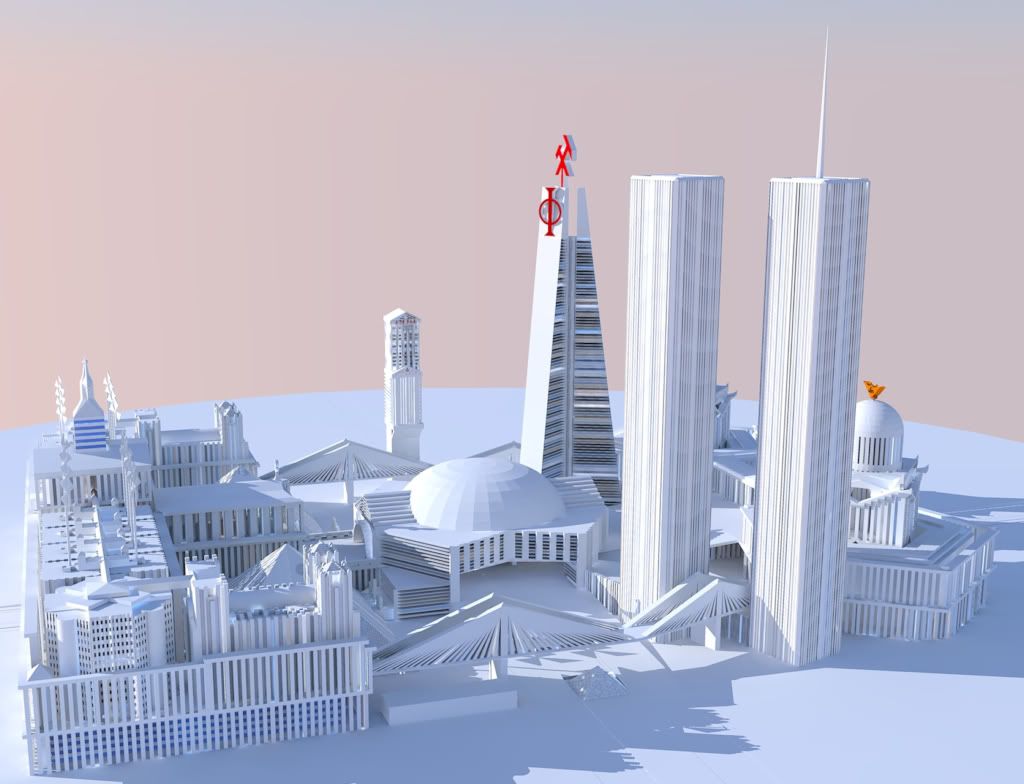12,000 faces later... Update 1.59 (The project now registers 159,000 faces)
The twin towers are now fully connected to the still unfinished central domed complex, and I have begun working on Tricentennial Tower.
Tricentennial Tower is designed to be the headquarters of the Imperial Commercial Corporation. It is comprised of three connected towers, each having 100 floors. It stands 1,477 feet tall including top-level mechanical space and ornamentation, with the highest usable floor topping out at 1,102'. It is decorated atop by a massive pick and hammer, reminiscent of the style of the Soviet Union. The ICC is symbolized by the uppercase letter Phi, which appears on each of the tower's three sides.
The fiction of this Empire suggests that the economy is monopolized by a State-run corporation (Imagine an entity like the U.S. Federal Reserve acting on unlimited power over all commerce). Thus, the Corporate headquarters is to be separate from the government, but nevertheless inextricably linked to it and funded by it.
Presumably, beyond the core capitol complex of federal and military buildings, almost all architecture throughout the (yet unbuilt) city is commissioned either by the Cultural Ministry or the Commercial Corporation. The Tricentennial Tower serves as the centerpiece for all finance, public and private.
The individual floors of the new tower are visible, but the skin of the building has not yet been added.

Most free-market-based urban landscapes reflect a blend of functionality and randomness. Cities slowly evolve over time as the commercial and residential demands of their region evolve. When a new building does go in, it reflects (ideally) the vision of the company/entity which will reside in the building, or the architectural style of an individual designer.
In contrast, and as is the case in my project, we are imagining an urban landscape which is taking shape by order and design of a central government. As an imperial project, little thought concerning the cost (or even, in some cases, the practicality) of the project need be taken into consideration; for the primary purpose of the construction, unlike commercial construction projects, is to create monuments serving as an all-dominating civil reminder of the grandeur of the Empire.
While such a scenario provides cause for an absolutely enormous scope in the building of
government projects, it also suggests that civil architecture, meaning anything that is part of (in this case) the rather limited private sector will likely be of a surprisingly low key, at least in comparison to what most of us would expect of a large city. Like villiagers dwelling in the shadow of a massive castle, the average people in this empire are, theoretically, rather poor, while the officially sanctioned imperial building projects are of unparallelled glory.
When I started this project, I resolved against designing anything without first understanding the structure's function. Additionally, I am trying to emulate a specific urban atmosphere which can only be appreciated if one also understands the nature of the economy and political structure of the environment for which they are designed (hense the fiction subtext which I am splicing in here as I go).



